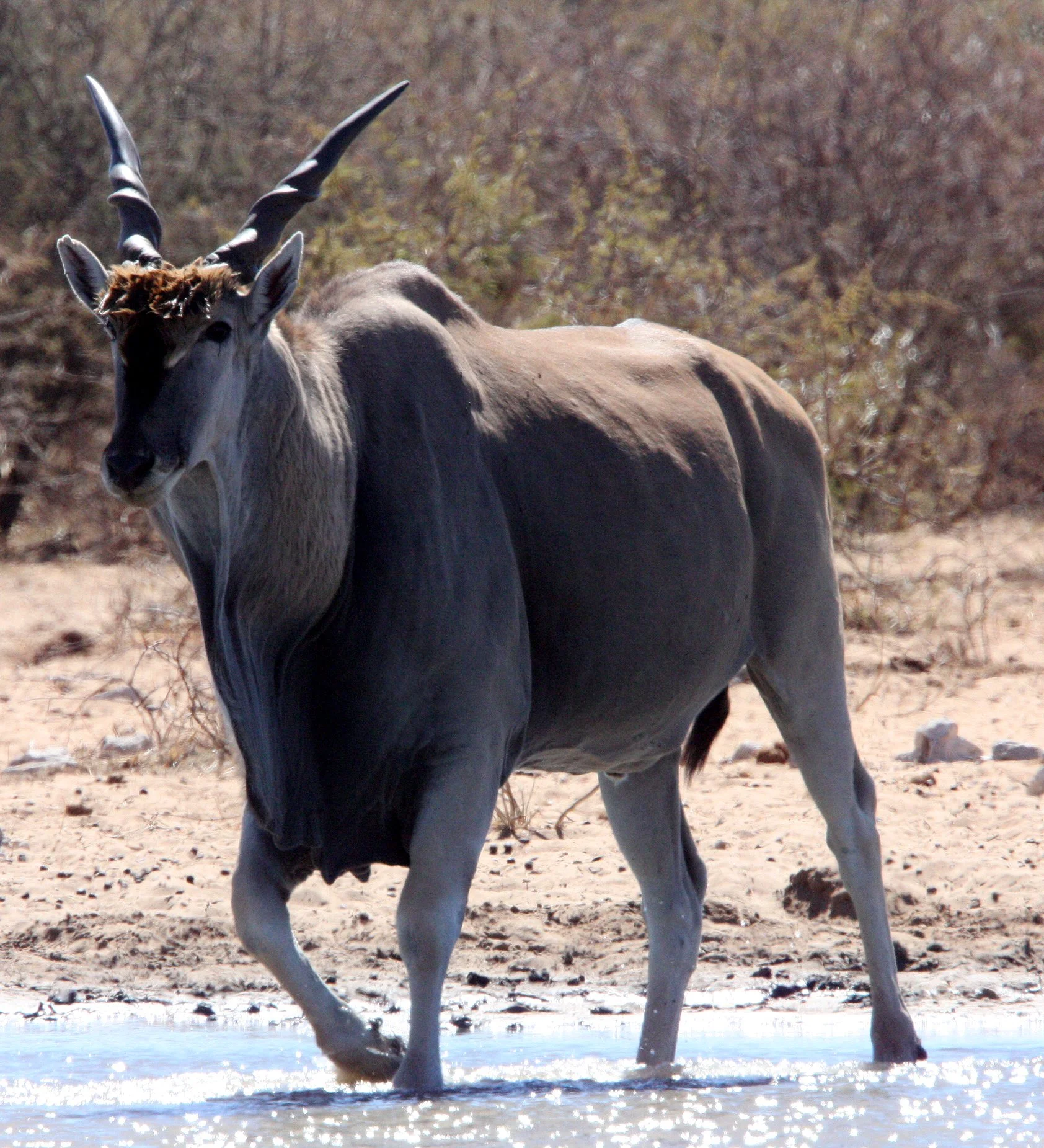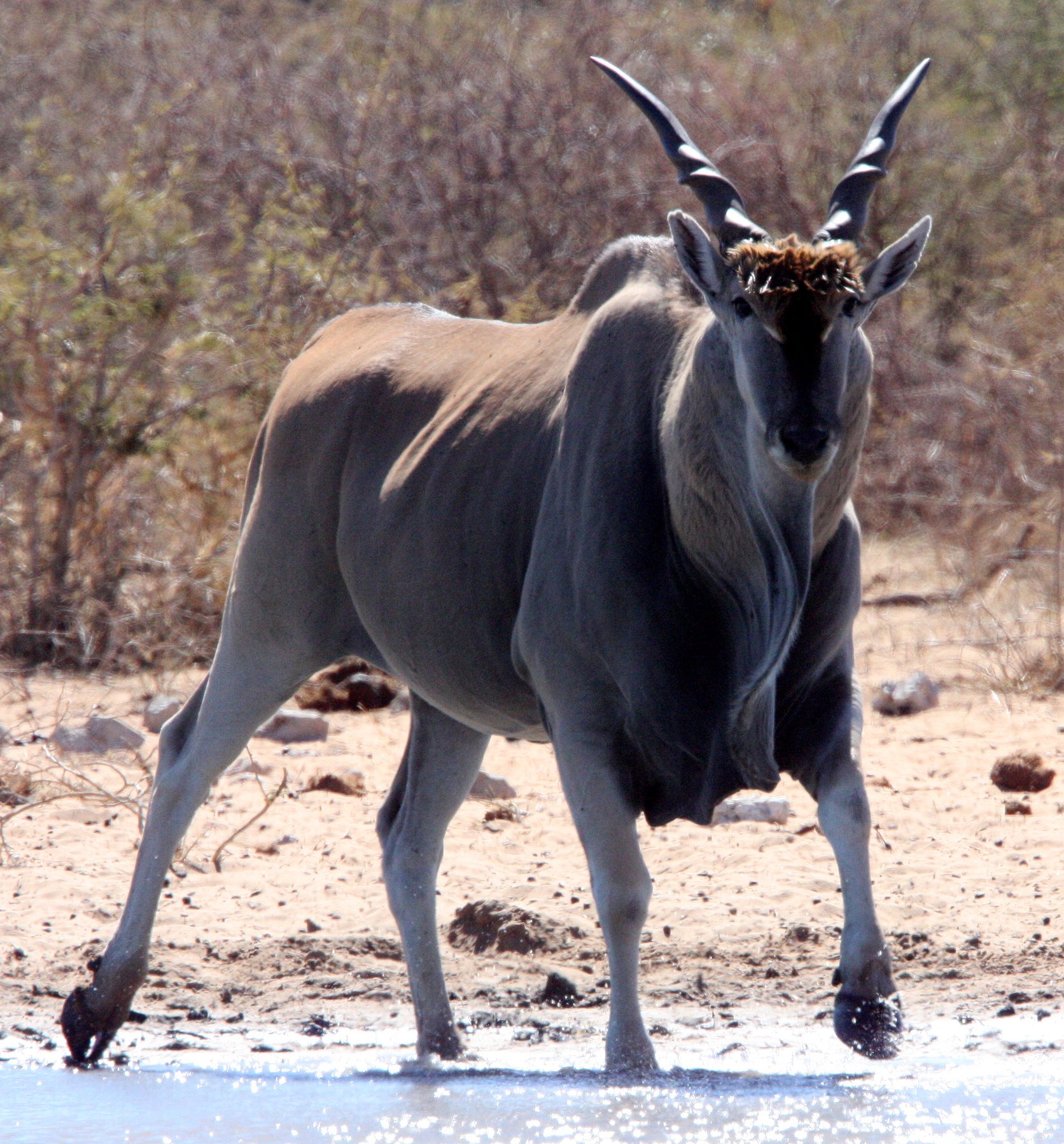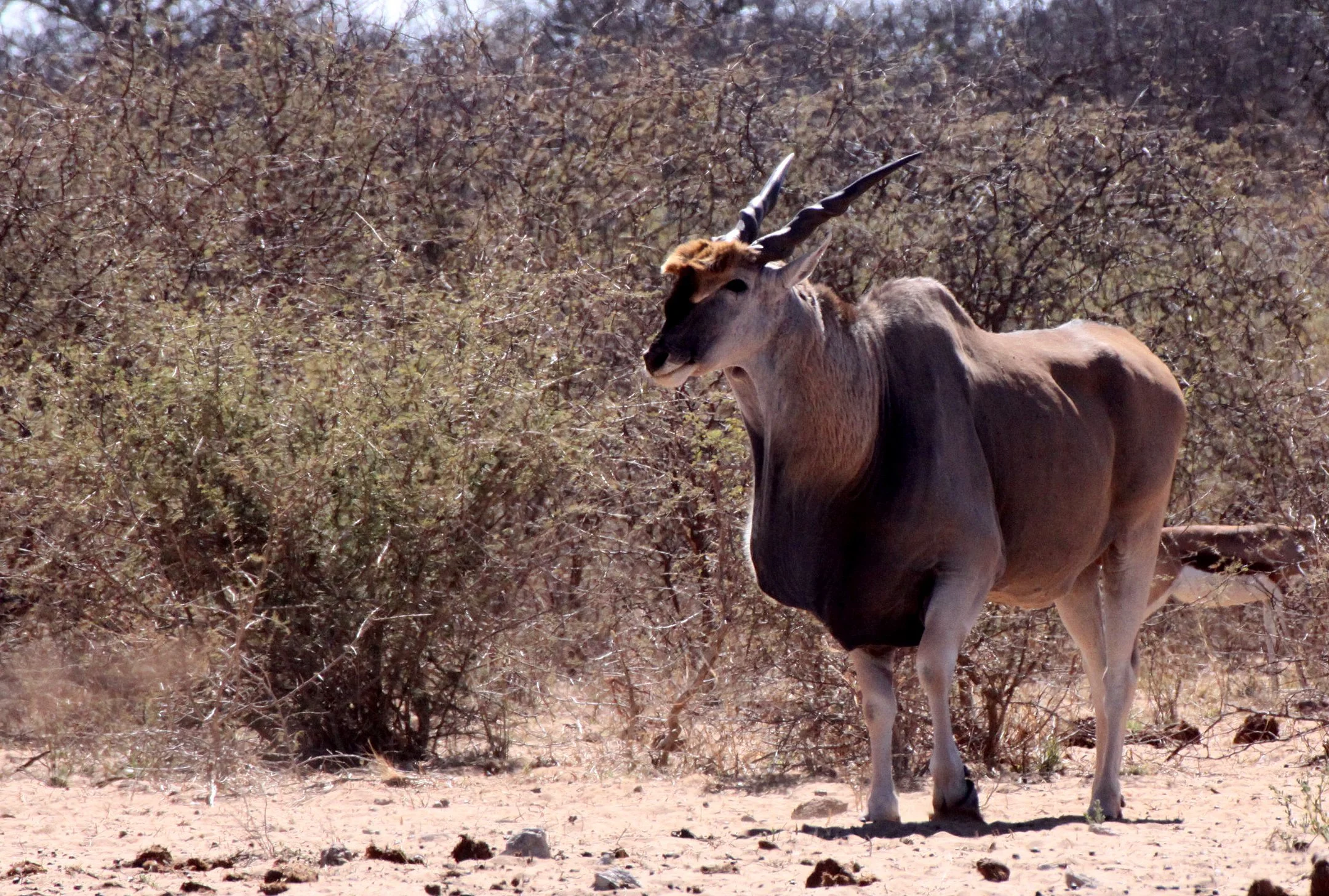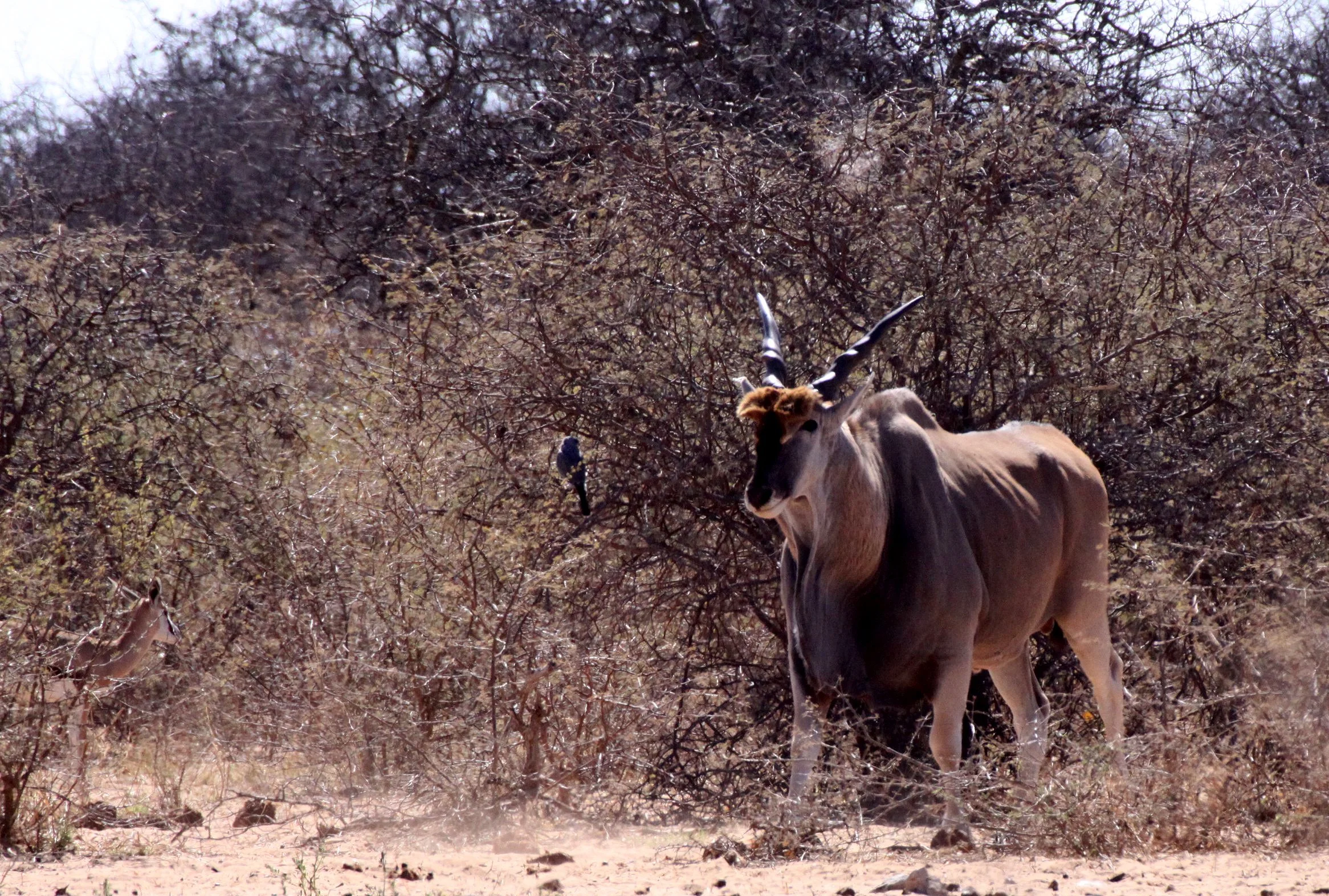
Taurotragus is a genus of large antelopes of the African savanna, commonly known as elands. It contains three subspecies - shown below.
The common eland (Taurotragus oryx), also known as the southern eland or eland antelope, is a savannah and plains antelope found in East and Southern Africa. It is a species of the family Bovidae and genus Taurotragus. An adult male is around 1.6 metres (5') tall at the shoulder (females are 20 centimetres (8") shorter) and can weigh up to 942 kg (2,077 lb) with an average of 500–600 kg (1,100–1,300 lb), 340–445 kg (750–981 lb) for females). It is the second largest antelope in the world, being slightly smaller on average than the giant eland. It was scientifically described by Peter Simon Pallas in 1766.
Mainly a herbivore, its diet is primarily grasses and leaves. Common elands form herds of up to 500 animals, but are not territorial. The common eland prefers habitats with a wide variety of flowering plants such as savannah, woodlands, and open and montane grasslands; it avoids dense forests. It uses loud barks, visual and postural movements and the flehmen response to communicate and warn others of danger. The common eland is used by humans for leather, meat and milk, and has been domesticated in many areas. Eland milk contains more butterfat than cow milk, and can keep longer without pasteurising.
It is native to Angola, Botswana, the Democratic Republic of the Congo, Eswatini, Ethiopia, Kenya, Lesotho, Malawi, Mozambique, Namibia, Rwanda, South Africa, South Sudan, Tanzania, Uganda, Zambia and Zimbabwe but is no longer present in Burundi. While the common eland's population is decreasing, it is classified as of Least Concern by the International Union for Conservation of Nature (IUCN).
Three subspecies of common eland have been recognized, though their validity has been disputed.
T. o. oryx (Pallas, 1766; Cape eland): also called alces, barbatus, canna and oreas. It is found in Southern and southwestern Africa. The fur is tawny and adults lose their stripes.
T. o. livingstonii (Sclater, 1864; Livingstone's eland): also called kaufmanni, niediecki, selousi and triangularis. It is found in the Central Zambezian miombo woodlands. Livingstone's eland has brown fur with up to 12 stripes.
T. o. pattersonianus (Lydekker, 1906; East African eland or Patterson's eland): also called billingae. It is found in East Africa, hence its common name. Like Livingstone's eland, its fur can also have up to 12 stripes.
Livingston’s Eland (Taurotragus oryx livingstonei) - Etosha Namibia













































East African Eland (Taurotragus oryx pattersonianus) - Masai Mara Kenya


















Cape Eland (Taurotragus oryx oryx) - West Coast National Park, South Africa













